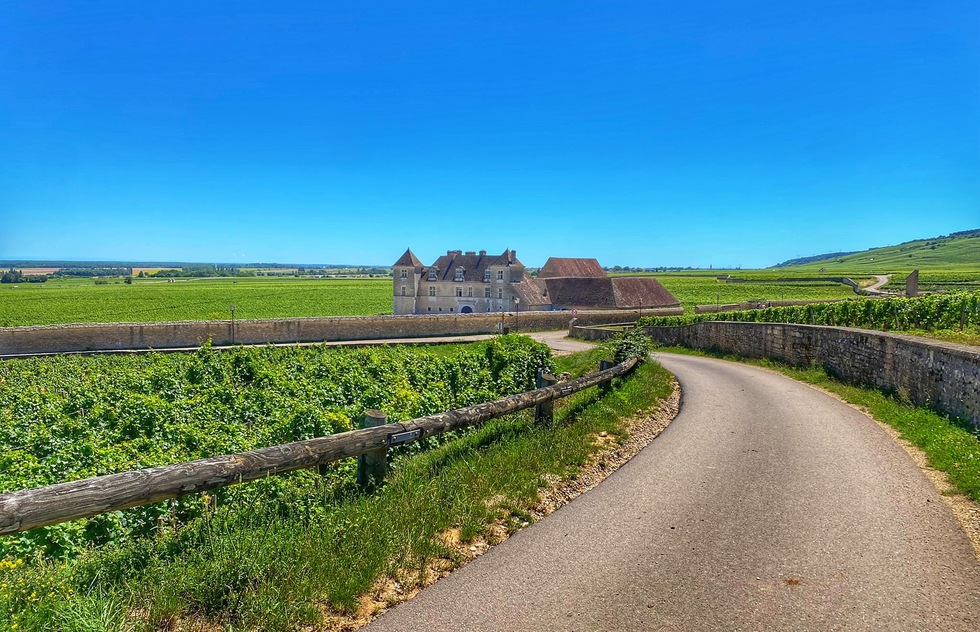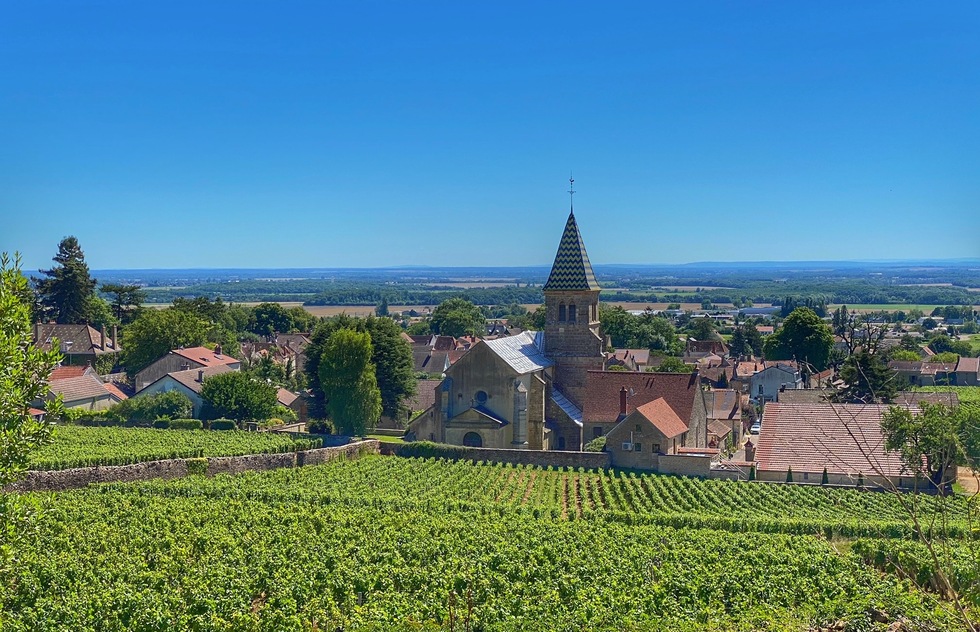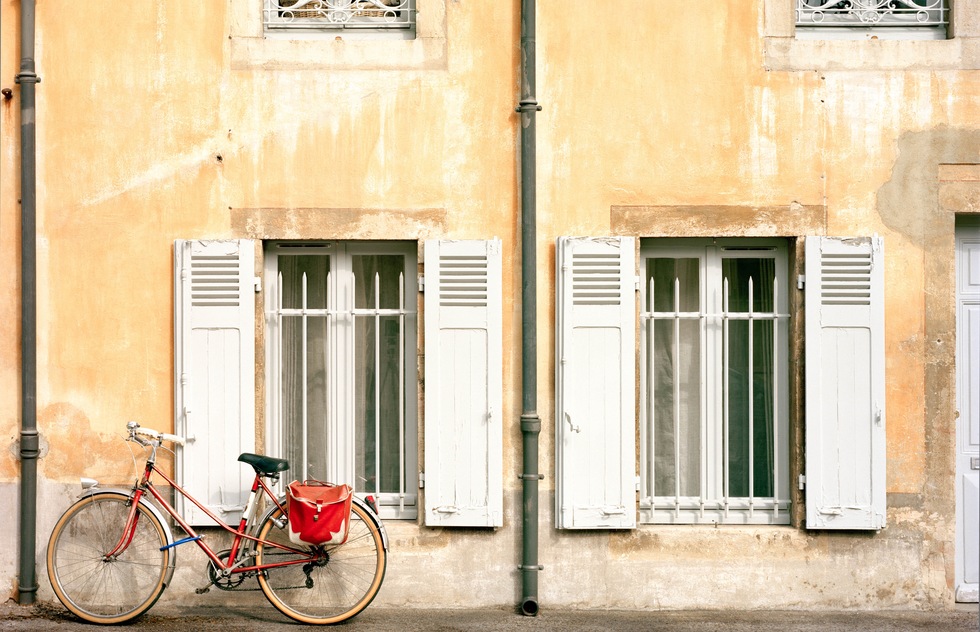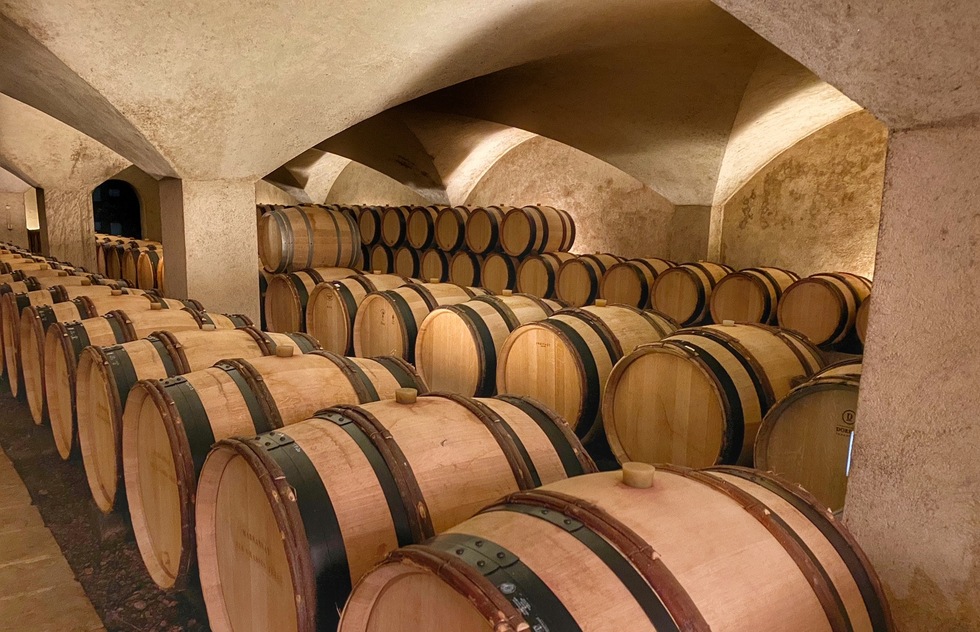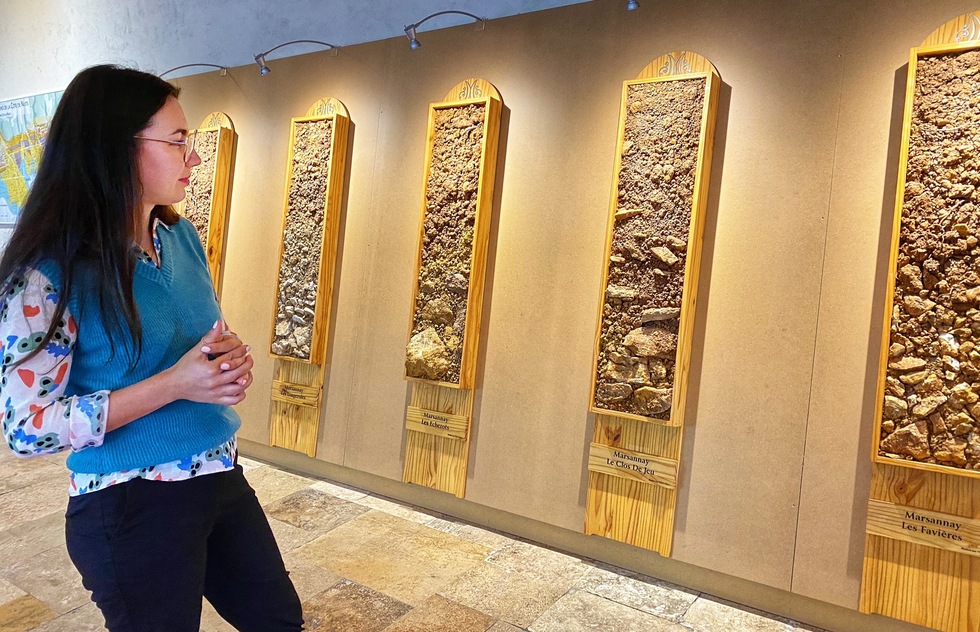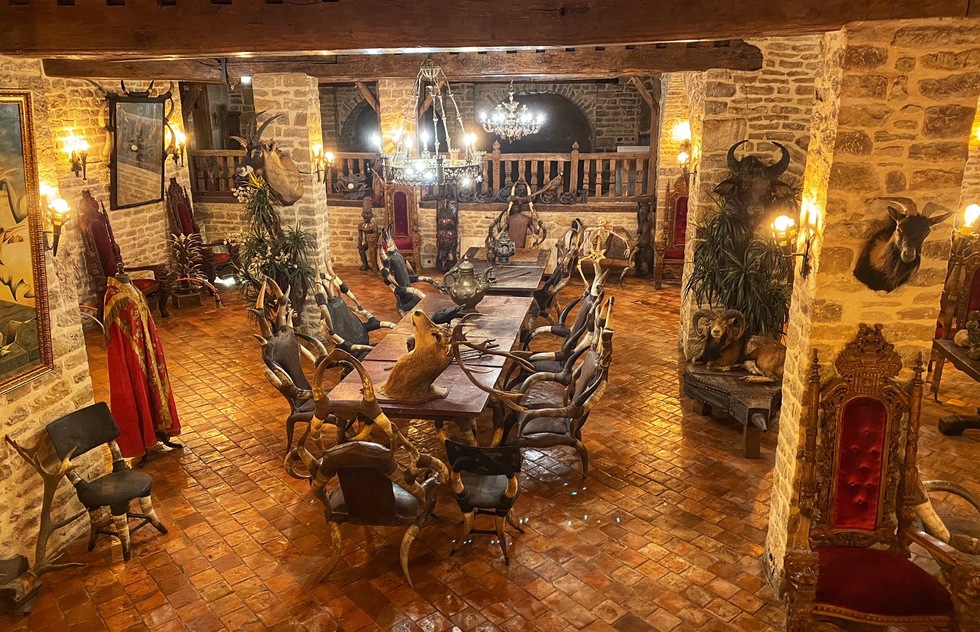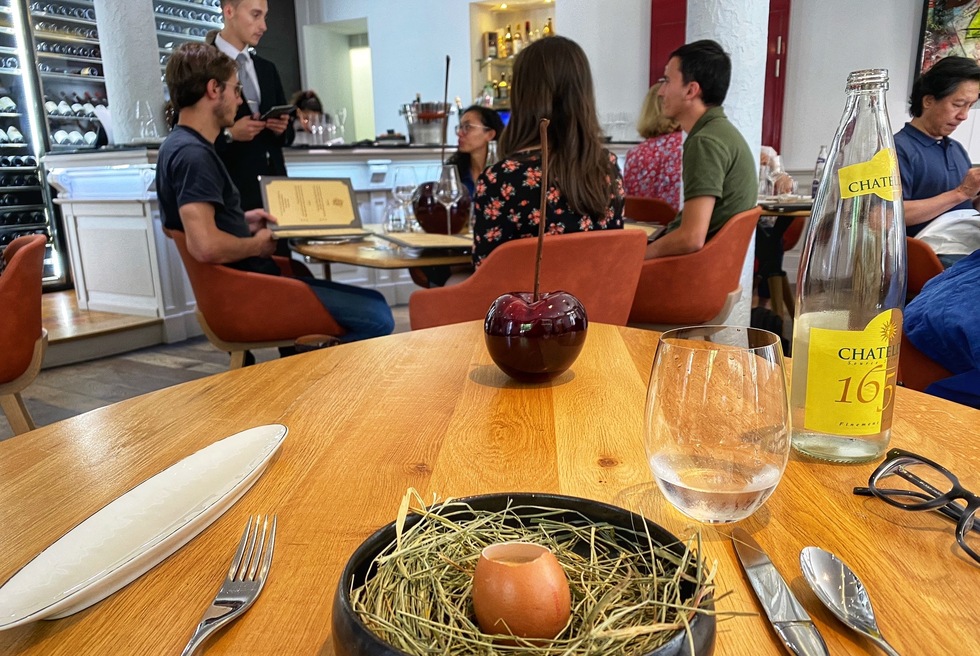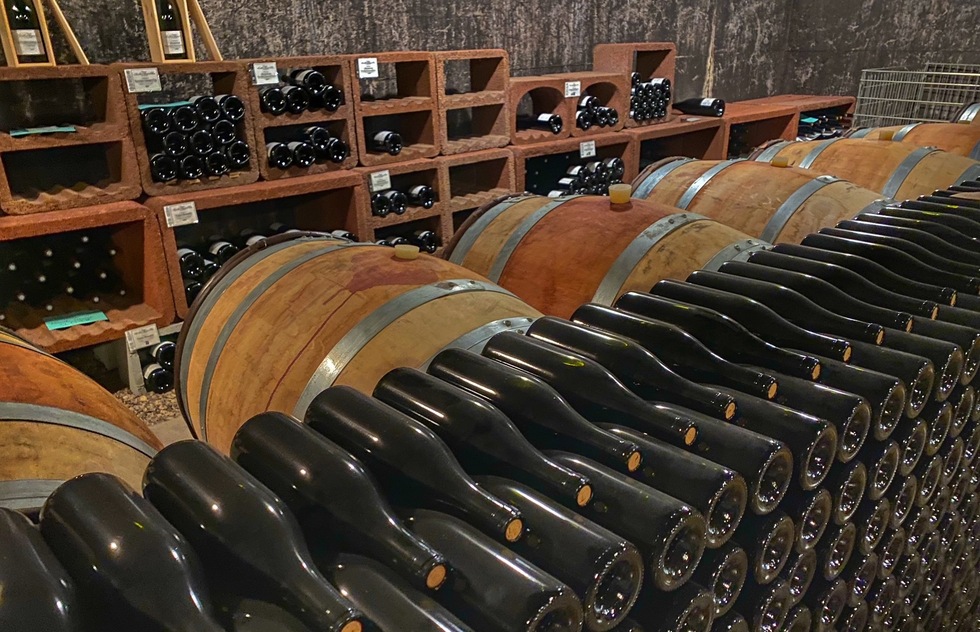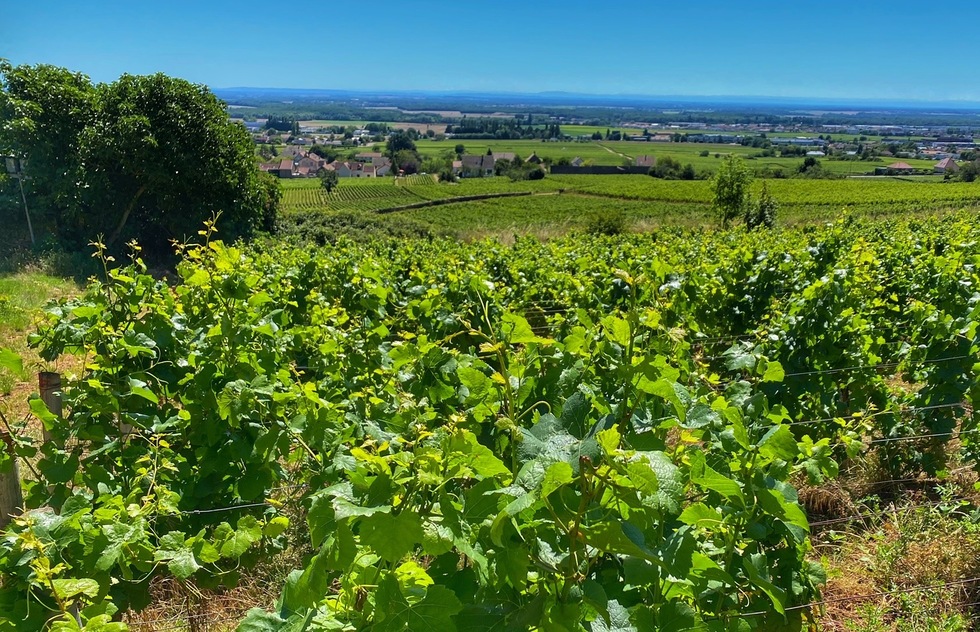Do Your Own Bicycle Tour of the Route des Grands Crus Wineries near Dijon, France
By Pauline FrommerWhen you visit one the most celebrated wine regions on earth, you must dedicate at least one day to visiting the grapes. And in Burgundy and Dijon, that exercise feels even more crucial than usual because of the local obsession with what experts call terroir.
Unlike in other parts of France (and the world) where grapes from different plots are blended to form wine, each bottle of wine in Burgundy represents the fruit of a single, obsessed-over plot of land (its "terroir"). Each inch of wine-growing soil in the region has been categorized by an official body, one that gives each plot a ranking, with Premier Cru and Grand Cru being the most coveted ones.
The assessment has to do with how far the each vine's roots have to travel to get water, an effort that is affected by the amount of limestone, clay, and other rocks in the soil; the angle of the plot; and the micro-climate the plants live in. Rule of thumb: the more tortured the vine—by which I mean the deeper the roots have to go in their search for sustenance—the more complex the resulting wine will be.
You'll learn all about this, and much more, at the wineries along the famed Route des Grands Crus. That's the artery that snakes past every major winery on the famed Côte de Nuits, the swatch of vineyards that stretches from Marsannay-La-Côte, a small wine growing village on the doorstep of Dijon, all the way to the vineyards in and around the town of Nuits-Sans-Georges, roughly 23km (14 miles) from the start of the route.
Going winery hopping here isn't quite as simple as it is in a place like the Napa Valley in California, where you can stop in at any winery you like. In Burgundy, the majority of wineries don't host tourists at all. Visitors buy tours so that they don't have to do research to figure out which places will welcome them.
But you'll pay significantly less if you undertake the journey on your own, as I did, by bike. And the research isn't all that difficult, nor is finding your way around.
Here's how to do it.
First, you'll need to figure out which wineries to visit. The website Rue des Vignerons is an excellent resource for finding visitor-friendly wineries along the Côte de Nuits (and in other French regions).
You must make advance reservations for tastings and/or tours, because if you don't, you run the risk of showing up and finding the door locked. That's what happened to me at winery called Domain Joliet, which I passed during my ride. I decided to simply drop by (and for my efforts, I enjoyed the lovely view you see above), but no one opened the door when I knocked.
How to choose which to pick? You could do a deep dive into wine reviews, choosing the wineries with the highest rankings for their product. Or your might look at the experience you'll have when visiting, choosing one winery because it's housed in a 12th-century edifice, or another because it's family-owned, or a third because it creates self-fermenting wines. All of the vineyards in Burgundy would be considered organic farms in other parts of the world because they use no fertilizers, but for self-fermenting wines, no yeast is added to speed up the fermentation process.
Red Pinot Noir is the dominant variety along the Côte de Nuits, but some wineries do make white (Chardonnay) or rosé. The small, colored drop symbols on the Rue des Vignerons site identify what type of wine each winery makes. If you're a Chardonnay fan, take the train to Beaune to do a tour of the Côte de Beaune instead—white wine is the specialty in that area.
Make sure your itinerary is geographically balanced. You'll want to pick one winery fairly close to Dijon, another near Nuits-Saint-Georges, and one between the two to connect the route.
Why Nuits-Saint-Georges? That's where the train station is, so most winery cyclists do a one-way, 23 km (14 mile) journey to it, and then hop the hourly trains back to Dijon.
If that still sounds too complicated, I've included a sample itinerary below that you can easily follow.
There are several bike rental businesses in Dijon. I used Bourgogne Evasion (78 rue Monge) and was very pleased with the service and the quality of the bicycle. For €20 per day, I got the bike, a helmet, a lock, and a small, removable enclosed basket that attached to the front. I carried it like a bulky purse into wineries.
I could have rented an electric bike for double the price, but they advised me, rightly, that I wouldn't need it—the route is mostly flat. But if you like the ease of ebikes, it could be a pleasant choice for the few gentle slopes you'll encounter.
The kindly staff also gave me suggestions about which wineries to choose, and my itinerary below is based partly on their advice.
Other bike rental options in Dijon include: Velovitamine and Cycle Classic Tours. Rental agencies will deliver your bike to your hotel for an additional fee.
Going to all this extra effort to plan your own tour is worth it.
The cheapest full-day guided bike tour I could find for the wineries near Dijon cost €176, but many were even more expensive. That included all of the gear, a guide, visits to two wineries, train tickets or van transfer, and lunch.
But doing it all myself, I ended up visiting three wineries in the course of the day (at €60) and paying €20 for my bike gear. My train ticket was €12. I had a very special lunch (more on that below), which blew out the cost a little, but if I had packed a picnic or gone to a more modest restaurant in one of the little towns I biked through, my overall cost would still have been about €100 less than most pre-arranged tours.
I think the savings justify the planning.
(Pictured above: Wine cellars at Chateau de Marsannay)
If you decide to follow my suggested itinerary, you'll head first to Le Château du Marsannay. It's an excellent place to start because its tour gives the visitor a solid grounding in the history of the region, the science behind grape cultivation and wine production, and the politics of the assignment of terroir status to vineyard plots.
My guide (pictured above) not only spoke perfect English, but also had insights to share about where the industry is going and the challenges of climate change. The winery's displays feature detailed maps of the Côte de Nuits, soil samples from different vineyards, and other exhibits that helped me frame my experiences for the rest of the day.
The only negative of Le Château du Marsannay is its operation feels corporate. I still think its comprehensive tour makes it an ideal beginning to the day. The tour and tasting takes about an hour and a half, include nine samples and costs €35 if you call and book it directly (as I did). Some of its tastings cost less.
You'll bike for roughly 45 minutes from the Château to Philippe Leclerc (pictured above). It's a convenient next stop, based in the town of Gevrey Chambertin and right on the route, though neither the wine nor the guided tasting was scintillating. What makes it recommendable are the Instagram opportunities—oddly, the winery is a veritable theme park of taxidermy. It was a hoot to wander around and see all of the odd animals they decided to stuff.
The tasting here was a brisk 10 minutes long and cost €10. From here, my ride took about 30 minutes to get to lunch, so if you take a 10am tour at the Château, you'll want to make a lunch reservation for 1:30pm at the next stop, which will be....
Remember the name Matthieu Mazoyer.
He's the chef at the converted village bistro restaurant Le Millésime, in the tiny village of Chambolle-Musigny. I have no doubt he's headed for bigger things. Lunching here on my tour of the Route des Grands Crus was a revelation—each dish was perfectly balanced, gorgeous to look at, not overly pricey, and a tasty surprise.
The descriptions on the English-language menu are either downright odd (like the "monkfish in virgin sauce") or don't do justice to what will be served (I'm looking at you, "seasonal crusty vegetables fine tart"). Pictured above is the amuse-bouche, a delightfully complex custard served in an egg shell in a nest.
Be sure to make an advanced reservation, and yes, you can dine in your biking outfit even though this is a Michelin-starred joint.
Following lunch, it's a 30-minute cycle to Domaine Armelle et Bernard Rion, my favorite stop of the day. The youngest daughter of this small family-owned winery leads the English tours here, and she discusses, quite engagingly, what got her into the business, how it shifted the family dynamics with her two sisters and parents, and her hopes and dreams for growing the enterprise.
At one point during the presentation, she led visitors into a storeroom filled with unlabeled bottles, explaining that because every country has different requirements for labels, the winery doesn't add the one until the bottle is sold—usually to visitors who come through on this very tour.
Biggest selling point: Domaine Rion created the wines that appealed to my taste buds the most.... I think. But I find I always enjoy the last winery of the day best, perhaps because I'm more than a bit tipsy at that stage.
At every winery, it's possible to buy bottles to be shipped home, and the vintners try to make that option appealing by giving you a significant discount to offset the hefty delivery fees. That could be a smart buy: Climate change-related issues ravaged recent harvests, which will likely lead to sharp upticks in the cost of Burgundy wines in the future.
The last leg of your ride is about a 20-minute ride to the train station in Nuits-Saint-Georges.
To keep your pedaling stress-free, buy your rail ticket in advance in Dijon. Because many bike renters close at 6pm, you'll want to get on a train no later than 5:15pm (they arrive hourly, but the schedule varies by day of the week). The railway carriages that bear a pictogram of a bicycle on the doors have storage space for them, so keep an eye out as the train pulls in. The journey will take about 20 minutes.
All in all, I think bike touring on your own is the ideal way to go in Burgundy. You'll get all the information you'd get from a guide when you speak to the folks who work at the wineries. It's a far less expensive experience, too, as I said earlier, but beyond that, going alone allows you to set the pace, to pull over every once in a while to take a snapshot, or duck into a bakery in a small town.
And that type of freewheeling is what you want on vacation, isn't it?
For more on the Dijon region of France, see our gallery on The Best Things to See and Do in Dijon.





